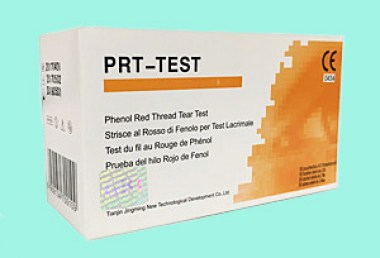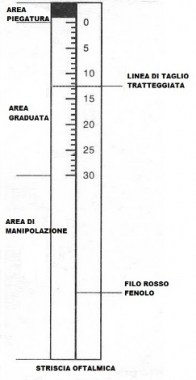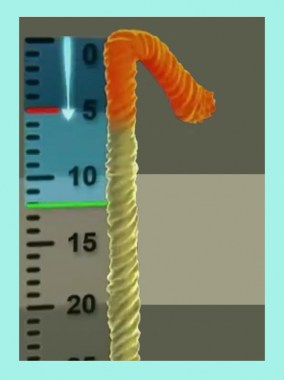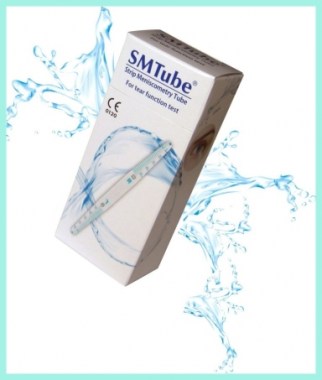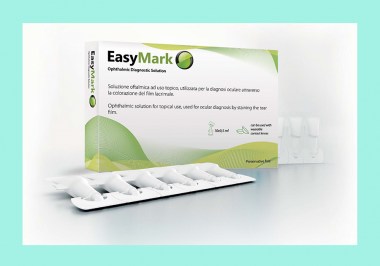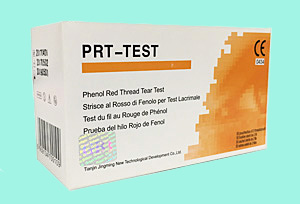 6800309.jpg
6800309.jpgHello! Do you need help? Click on the operator and write to us.
PRT PHENOL RED THREAD TEAR TEST

[Full description below...]
Description
PRODUCT NOT AVAILABLE see the new product 68.003.08
tear test used to evaluate tear production in evaluating patients with dry eyes - tests the assessment of lacrimal insufficiency - cotton thread treated with phenol red, which changes colour from yellow to red on contact with tears - 50 pouches with 2 strips - CE mark
tear test used to evaluate tear production in evaluating patients with dry eyes - tests the assessment of lacrimal insufficiency - cotton thread treated with phenol red, which changes colour from yellow to red on contact with tears - it is less invasive than the Schirmer test - 50 small bags containing 2 threads - sterile - CE marked *
The Phenol Red Test (PRT) was introduced in 1982 and was developed to overcome many of the disadvantages of the Schirmer test, including the high variability, poor reproducibility and low sensitivity regsrding the detection of dry eye
* Methodologically, the PRT test is similar to the Schirmer test but is less invasive both regarding the amount introduced and for the limited examination time
* Phenol Red is pH sensitive and changes from yellow to red when it is wet by tears; this is due to their alkaline nature (pH 7.4). The red portion of the thread is analogous to the wetting of the Schirmer strip and the length of the red colouring is recorded in mm
* One of the main advantages is the fact that the thread is hardly felt or not felt at all, therefore there is a smaller reflex component. Moreover, the test lasts only 15s per eye; the eyes remain open so they can blink and no anaesthetic is required
* This test is aimed at reducing reflex tearing to a minimum, thus allowing the basal tearing to be measured
* Standard clinical data suggests that, for 15s of testing, the wet length should normally be between 9 and 20 mm. Patients with dry eye obtain values less than 9 mm
* Different studies have highlighted a greater repeatability of the PRT test with respect to the Schirmer test (with and without anaesthetic) and greater reliability in the diagnosis of dry eye
* Research has shown that the probability of a false positive is lower with PRT with respect to the Schirmer test
* Estimate of the reproducibility: the Pearson coefficient is 0.89 for the PRT and only 0.39 for the Schirmer test
* The test cannot assess the tearing if high volumes are produced due to the poor absorption of the thread, but is a valid examination in the case of poor tearing
* The tear film break-up test with Phenol Red thread is less irritating than the Schirmer break-up test
* The Phenol Red resulted as being superior to the conventional Schirmer test in terms of comfort and consistency of the results obtained
* The PRT is easier and more comfortable for the patient and can also be used with children
Bibliografy:
- http://www.ncbi.nlm.nih.gov/pmc/articles/PMC2802411/
Quantitative assessment of tear production: A review of methods and utility in dry eye drug discovery - J Ocul Biol Dis Infor. 2008 March 1(1): 1–6. Published online 2008 July 16. doi: 10.1007/s12177-008-9006-2
- Rosso di fenolo: Minimally invasive test of tear quantity (especially, volume of tears in conjunctival fornix)- http://www.thevisioncareinstitute.it/sites/default/files/content/it/pdf/090918.Cap.%204.pdf
- http://webusers.fis.uniroma3.it/zeri/Dispense_Ottica_della_Contattologia_I/Articoli/Gheller_Fossetti_2003.pdf
- http://it.made-in-china.com/co_ramonazhou/product_Phenol-Red-Thread-Tear-Test-2-THREADS-POUCH-50POUCHES-BOX-_herghrnsy.html
Cho P. The cotton thread test: a brief review and a clinical study of its reliability on Hong Kong-Chinese. Optom Vis Sci 1993;70(10):804-8. Review- http://www.ncbi.nlm.nih.gov/pubmed/8247481
- Evaluation of Phenol Red Thread test versus Schirmer test in dry eyes: A comparative study - Int J Appl Basic Med Res. 2011 Jan-Jun; 1(1): 40–42


 Italiano
Italiano
 Español
Español
